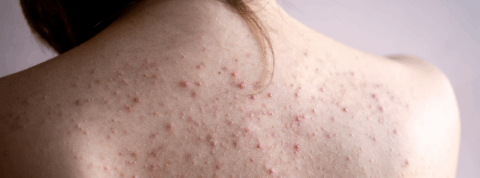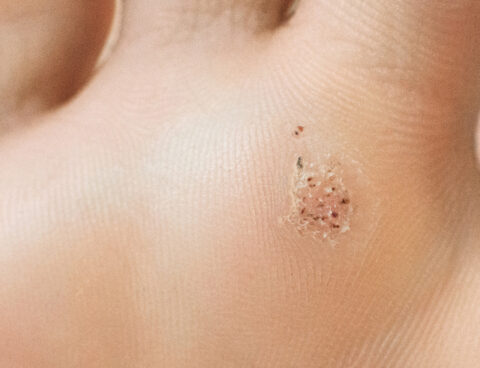Home » Oxona Blog » Understanding verrucas – treatment options and strategies for effective removal
Most people will get a verruca once or twice times in their lifetime. They can stay hidden from your immune system for many years, especially as you get older, which is why people get so fed up with them.
The sheer number of treatments on offer in the shops reflects the difficulty in getting rid of them with medication. In this article, we will delve into the intricacies of verrucas, their resilience against the immune system, and the various treatment methods, with a focus on evidence-based strategies for effective removal.
The elusive nature of verrucas
It’s a common experience – you notice a verruca on your foot, and despite your body’s immune defences, it stubbornly persists. As we age, our immune system’s efficiency can decline, allowing these wily growths to evade detection and continue their stealthy existence. This phenomenon can lead to mounting frustration, prompting individuals to seek out treatment solutions that promise swift relief.
Navigating the maze of treatment options
The sheer abundance of treatments lining the shelves is a testament to the challenge of eradicating verrucas. From creams and ointments to medicated plasters and freezing kits, the options are vast and varied.
Salicylic acid and freeze treatment – a winning combination
The best evidence to get rid of them is a combination of salicylic acid and freeze treatment (cryotherapy using liquid nitrogen) – salicylic acid paired with freeze treatment. Salicylic acid, available in various brands like Scholl Verruca Removal System, offers a chemical approach to gradually erode the verruca, making it an effective initial step. However, the real knockout punch comes from freeze treatment, where cryotherapy using liquid nitrogen is used to expose the verruca to freezing temperatures, causing it to die off.
The microwaves vs. freezing debate
While the market is always buzzing with new treatments, it’s important to approach them with caution. The introduction of microwave treatment for verrucas might seem enticing, but the question of effectiveness and cost comes into play. Despite the hype, freezing still holds its ground as a tried-and-true method, often rendering the microwave alternative less appealing due to its expense and comparable efficacy.
Choosing the right arsenal – acid strength matters
When selecting a treatment strategy, opting for the strongest acid is a crucial consideration. Brands like Scholl Verruca Removal System and medicated corn plasters offer formulations with 40% acid content, and for those seeking even more potency, Pickles ointment boasts an impressive 50% concentration. Coupled with consistent application and careful attention, these acidic remedies can be instrumental in wearing down the verruca over time.
The persistence of treatment
Patience is key when battling verrucas. Consistency is vital during the three-week salicylic acid application period, combined with regular and vigorous scraping of dead skin. However, the most effective part of treatment is the liquid nitrogen freezing session. While over-the-counter freeze kits might fall short in terms of temperature, booking a professional cryotherapy appointment ensures the verruca receives the chilling effect it needs to meet its demise.
You can book a 15 minute procedure appointment through our website for cryotherapy treatment. We’ve made it so simple to access Oxona’s specialist care. There’s no need for a referral, so all you need to do is book an appointment right here. You have a choice of appointment type, location, practitioner, date and time, helping you get the help you need, where and when you need it https://www.oxonahealth.co.uk/patients/book-an-appointment



